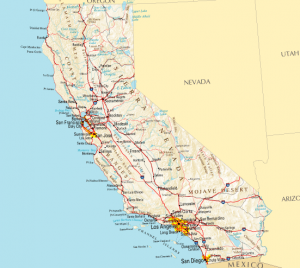California state health officials have issued an alert for consumers to avoid consumption of the following from coastal waters in Monterey and Santa Cruz counties:
- recreationally harvested oysters and clams
- any recreationally or commercially caught anchovies and sardines
- internal organs from any crabs captured recreationally or commercially
- (routinely screened, commercially harvested oysters and clams remain acceptable for consumption)

Monitoring scientists at UC Santa Cruz have reported one of the largest blooms ever detected in Monterey Bay of algae often associated as a ‘red tide’ and which produce a phycotoxin that causes amnesic shellfish poisoning in humans, domoic acid. Atypically warm water temperatures may be responsible for this proliferation since early May. Two toxin-producing species of this algae, Pseudo–nitzschia australis and P. multiseries, are regularly detected in relatively insignificant concentrations in central California coastal waters.
It is believed that these phytoplankton produce domoic acid as a metabolic by-product or as a chemical defence against competitors, predators and parasites. In humans, domoic acid acts as an excitatoxin that interferes with the binding of glutamic acid at its receptor site on neurons. High concentrations can lead to neuropathy, and in particular protracted impairment of antegrade (short-term) memory, which is the principal characteristic of amnesic shellfish poisoning. Other symptoms of amnesic shellfish poisoning include vomiting, abdominal cramps, diarrhea, headache, dizziness and in extreme cases, coma and death. Symptoms can present within 30 minutes and up to 24 hours after consumption of toxin-tainted food; seafood acceptable for human consumption must not exceed 20 micrograms of domoic acid per gram.
Because this toxin is water soluble, it is passed along a ‘shortened’ food web from prey with toxin or toxin-producing cells in their tissues or viscera, i.e. molluscs and fish that feed on algal blooms. In addition to humans, birds and sea mammals, especially the California sea lion, have historically suffered from neurological impairment or have died during such algal bloom ‘events’. Strandings of sea lions on beaches often involve those acutely and chronically damaged by algal blooms. The monitoring scientists at UC Santa Cruz have observed that this algal bloom has presented itself along the coast of the western United States, as far north as Washington State.
Steven Smith, M.Sc. is an Infectious diseases epidemiologist

